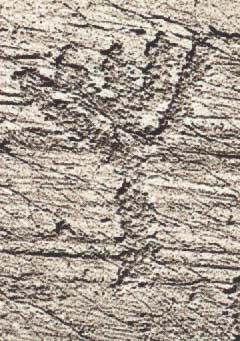Runes
in Langbard
o
The
word "Langbard" was used , in a first time some years ago , by a
group of Odinists who were the founders of Odinism/Asatru in the area
of present-day Northern Italy . This area is actually called "Padania"
by a lot of patriots who are fighting for the independence of out
country from the Rome-occupation government .
"Langbard" respect
to "Padania" is a more ethnically word and is a contraction
of the term "Langbardalan" : the Land of Lombards (or Longobards)
, those terms - of course- mean the same entity .
So
, now , more heathens who're patriots too , are using this name in honor
to the great Lombard kingdom who was extended in all the area of
present-day Northern-Italy ( a land of ancient Celtic heritage).


 Stone -engravings
in Langbard
Stone -engravings
in Langbard
lIn
brown : Runic places
tOut
from the Langbard's boarders
 "Val ", "Valle " = "Valley"
"Val ", "Valle " = "Valley"
 "Lago" = "Lake"
"Lago" = "Lake"
 "Monte"=
"Mountain" ; "Monti"="Mountains"
"Monte"=
"Mountain" ; "Monti"="Mountains"
1 Valle Camonica ( zone
di capodimonte e circostanti);
2 Valtellina ( area di Grosio
e circostante);
3 Garda e pendici del Monte
Baldo;
4 Val d'Assa e Altopiano
d'Asiago;
t5
Sued Titol
6 Spina verde comasca ed
aree circostanti;
7 Sesto Calende e Basso
Verbano;
8 Alto Varesotto ( Val Viaschina,
Veddasca, Dumentina);
9 Val Vigezzo;
10 Val d'Ossola;
11 Lago d'Orta;
12 Valle d'Aosta ( tutta
la Valle è interessata);
13 Valchiusella;
14 Val di Lanzo;
15 Monti Musinè,
Ciabergia e Val di Susa;
16 Val Pellice;
17 Val Chisone e Val Germanasca;
18 Colle dei Sabbioni;
19 Ventimiglia - Balzi Rossi;
20 Finalese;
21 Varazze ( Alpicella );
22 Monte Beigua, Pian
Paludo;
23 Acquasanta;
24 Lunigiana;
25 Carso triestino;
26 Valli del Natisone;
27 Carso Istriano, S.Servolo;
t28
Totes Gebirge;
t29
Notgasse;
t30
Ybbs;
t31
Hallein;
32 Carschenna;
33 Val Bregaglia;
34 Canton Ticino;
t35
Sion;
t36
Salvan;
t37
Verbier;
t38
Grimentz;
t39
Haute Maurienne - Thyl;
t40
Haute Maurienne - Lanslevillard;
41 Monte Bego;
42 Val Fontanalba .
 Rune engraved in
Langbard
Site n.r 1 :Val Camonica
Rune engraved in
Langbard
Site n.r 1 :Val Camonica
 « (...) and runic alphabets all descend from an older
system of North Italic origin .
« (...) and runic alphabets all descend from an older
system of North Italic origin .
This is the opinion of two runologists,
C.G.S. Marstrander and H.Hammarstrom. It is not precisely know who the
North Italic people were, although they were probably a part of what we
now call the Alpine Germanics.
It seems that we are
dealing with a fusion of two systems, partly native-Germanic and partly
Etruscan in origin. Various runes and rune-like inscriptions and sigils
have been found all over Europe. These symbols were somehow developed
into the Common Germanic runic futhark system as we know it ; whether the
system came about though a slow process of growth and integration
or as a result of the endeavors of a limited number of initiates
, or even of one individual , we shall probably never be able to establish
. My personal belief is that the runic system is partly native and partly
North Italic.
We cannot tell precisely
which German tribe it was that spread the rune-script all over Germanic
territory . It many have been the Marcomanni , a tribe living near the
area of present-day Austria, or the Cimbri, or else the Eruli.(It
is not even certain whether the Cimbri were a Germanic-speaking tribe,
as the evidence supplied by the Gundestrup cauldron suggest that this tribe
was Celtic). Heruli, or Erilaz, appears to be the name of one of the oldest
Germanic tribes, which inhabited the area of present-day Denmark. "Heruli"
was used in the Viking Age as a title for a type of rune-master and denotes
a trained magician or shaman rather than someone who was merely able
to chisel runes in stone . The evidence indicates that the Heruli were
most probably the people who disseminate knowledge of the futhark, and
by so doing their tribal name has been passed down throughout history as
a title applied to those with special skills in rune-lore.»
From :
Freya Aswynn’s"Nothern Mysteries and Magick" P.6,
Llewellyn Publications, St.Paul , MN 55164-0383 USA
Per
saperne di piu'
sulle Rune in Langbard
More
about Runes in Langbard
Directory



